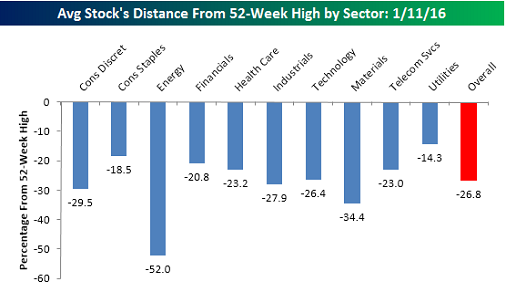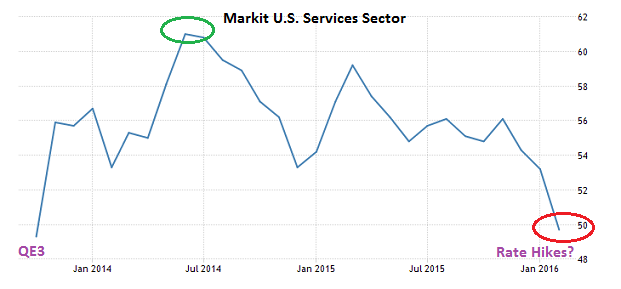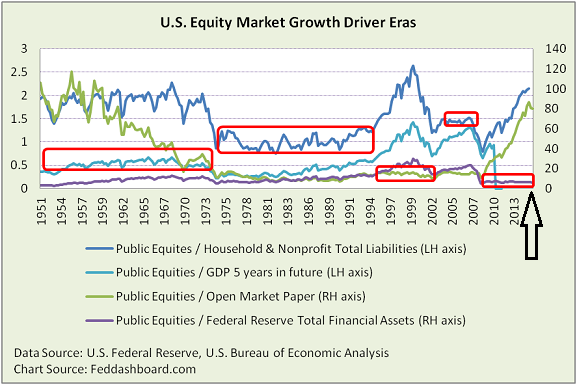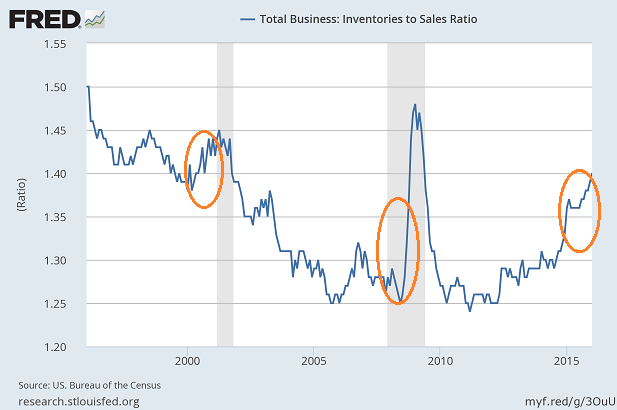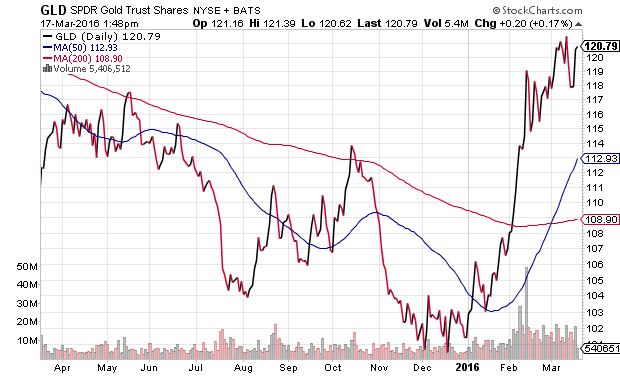Three months ago, the Federal Reserve anticipated raising overnight lending rates four times in 2016. Now they are projecting just two hikes. At this rate, by the time June rolls around, Janet Yellen’s Fed will declare zero changes to interest rate policy for the entire calendar year. And in the fall? If there’s enough financial market turmoil, voting members of the central bank’s Open Market Committee (FOMC) may announce new quantitative easing measures in what will be dubbed by the media as “QE4.”
Lost in the euphoria over slashing rate hike estimates in half? The Fed cannot meaningfully distance itself from zero percent rate policy.
For one thing, the financial markets themselves go haywire at the mere prospect of “gradual stimulus removal.” Stocks plummeted in August of 2015, forcing the Fed to wait until December to make a single quarter-point effort. And that negligible move in December? It brought about January’s collapse of faith that sent the average U.S. stock into bear market territory for the first time since the Great Recession.
Secondly, the Fed may place the blame for the lackluster U.S. economy on global stagnation, but the results remain the same. The U.S. manufacturing segment fell into recession in 2015; the U.S. services sector recently hit a 28-month low, hitting a data point that is consistent with economic contraction.
The impressive stock rally off of the early February lows – an 11.5% monster bounce for the market-cap weighted S&P 500 – has many investors believing that the worst is in the rear view mirror. However, since the Fed began curtailing its bond buying/electronic money printing program (a.k.a. “QE3″) in earnest circa mid-2014, the U.S. economy has struggled. A peek out the front windshield suggests that the U.S. economy is likely to suffer if the Fed raises overnight borrowing costs any further.
Why on earth would modest quarter-point hikes have such a devastating impact on stocks? In a world where all of the central banks are loosening the reins, any tightening by the Fed is likely to strengthen the U.S. dollar. An unusually strong greenback adversely affects 50% of the strained earning potential of U.S. multi-national corporations. And that might lead to more earnings declines for already overvalued companies.
Instead, the Fed’s capitulation on its rate hike path has already sent PowerShares Dollar Bullish (NYSE:UUP) down 200 basis points in two sessions. The lower dollar is sending the price of commodities higher, stoking interest in SPDR Select Sector Materials (NYSE:XLB) and SPDR Select Sector Energy (NYSE:XLE). The lower dollar is also increasing investor hope that companies might turn the tide on four consecutive seasons of profits-per-stock-share deterioration.
To recap, the slowest pace of Fed tightening in the central bank’s history just became even more “gradual.” And the dollar, while still quite strong relative to a basket of world currencies, is sitting near a 12-month low. The question going forward is, “Did the Fed do enough to keep the stock bull market alive or, absent more quantitative easing (QE), will elevated valuation levels keep a lid on risk appetite?”
Economist Brian Barnier, principal at ValueBridge Advisors, probably believes we will need more QE. Barnier employed visual analysis techniques and regression analyses to investigate the primary factors responsible for bull markets throughout history. In the current bull market, the single biggest driver of stock growth was Fed asset acquisition with electronic dollar credits (QE). How big of a driver? The timing and amount of growth in the Fed’s balance sheet accounted for 93% of stock price appreciation in the current stock bull.
It follows that the excitement over the Fed’s “it’s only going to be two hikes” is likely to fade. Stretched valuation levels will encourage more sellers than buyers when earnings season rolls back around. One may want to recall that earnings estimates for S&P 500 corporations are plummeting at the quickest pace since the financial crisis. At the onset of 2016, the “Street” projected 0.3% first-quarter earnings growth. Now Wall Street anticipates an 8.3% contraction – the largest shift since the initial two months of 2009.
There’s more. Economic weakness continues to assert itself in hard data like the Inventories-to-Sales Ratio. The ratio has spiked form 1.3 to 1.4 in a matter of months, suggesting that U.S. companies are stockpiling goods because the demand for those goods simply isn’t there. And if it were, retail sales would not have fallen -0.4% in January and -0.1% in February.
Naturally, it would be easy to focus on the “risk-on” rally for stocks without taking note of the premier performers. Health care? Financials? Technology? Nay, nope and hardly. Energy boost notwithstanding, it is the non-cyclical “risk off” segments like SPDR Sector Consumer Staples (NYSE:XLP) and SPDR Select Sector Utilities (NYSE:XLU). What else is appreciating since the Fed’s step backwards? “Risk-off” iShares 20+-Year Treasury Bond (NYSE:TLT) and “risk-off” SPDR Gold Trust (NYSE:GLD). Both are near 52-week peaks.
In sum, the world economy will continue to adversely impact the U.S. economy. Corporate earnings will continue to suffer. Valuations will remain elevated. And the only path to bull market glory involves an innovative Fed package that will be dubbed by the media as QE4. Without the balance sheet expansion that sits at the heart of the current cycle’s price appreciation, it would be foolish to take up large positions in riskier assets.

